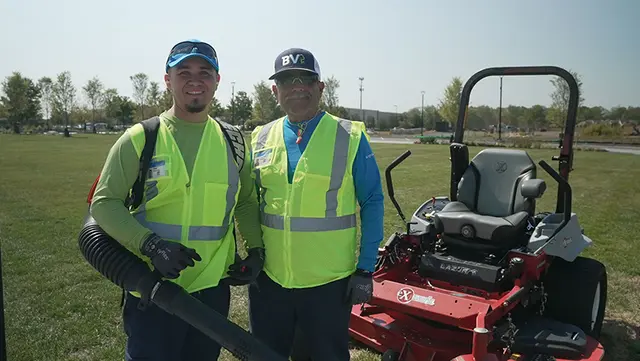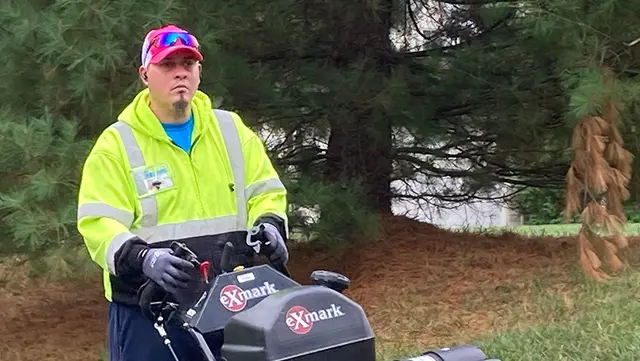
10 Tips for a Successful Job Interview in the Landscape Industry
Here’s How to Make a Great Impression
If the thought of a job interview has you shaking in your boots, you’re not alone. For many people, a job interview is as nerve-wracking as public speaking. However, it doesn’t have to be that way. If you’re considering a career in the landscape industry, here are some tips that will make the interview process painless.
1. Research the Company
You don’t have to know everything there is to know about landscape, but you should know some of the basics. Before your interview, be sure to browse the company website, paying attention to the services they provide and the industries they serve. If the company has a blog or social media, read through their recent posts. If you have the names of your interviewers in advance, be sure to also look up their LinkedIn profiles. Doing so will help you identify where your experience or interests align with the team’s goals and capabilities. This will give you talking points for your interview that will make it easier it to illustrate how you can benefit the company.

2. Choose What You’ll Wear Wisely
Waiting until the morning of your interview to select what to wear is inviting trouble. You don’t want to find out at the last minute that the shirt you had in mind has a stain, or the pants no longer fit. As soon as your interview is scheduled, try on the clothes you intend to wear, so you have ample time to handle any laundering or shopping needed.
As for what to wear, consider the position you’re applying for. Due to the nature of the work, the landscape industry tends to be more casual. However, you should still dress to impress. If you’re interviewing for an office job, a suit or collared shirt with nice slacks is appropriate. If you’re interviewing for a job that’s not behind a desk, stick with the collared shirt and slacks; a suit is not necessary.
3. Know How to Get to the Interview Location
The day before your interview (or sooner), map your route to the interview location. If you’ll need to travel during rush hour, make sure you plan extra time for traffic. If you’re not sure how much time to allot, plug the address into a feature like Google Maps, which allows you to specify what time you’ll be hitting the road to provide a more accurate estimate. Remember, being on-time for an interview generally means arriving a little early. You don’t want to cut it too close.
Finally, if it’s not clear where to park, or where to check-in when you arrive, reach out to your contact at the company ahead of time to confirm. It’s a simple step that will help ensure you stay cool, calm and collected before your interview.
4. Practice with a Friend
If you’re feeling nervous, enlist a friend or family member to practice interview questions with you. For help anticipating what you might be asked, search online for interview questions. Many sites offer a long list of examples. Or, if you’d rather prepare on your own, some people find it helpful to practice in the mirror or car, or write out potential responses. While you shouldn’t go to the interview with note cards, writing down your thoughts in advance can make it easier to formulate what you want to say.
However you choose to prepare, remember you should present a genuine version of yourself in the interview. Don’t worry about trying to memorize answers; it can make you look rehearsed. Recruiters want to see the real you. So, don’t sweat it if you say “um,” or take an occasional pause to collect your thoughts. Those things are only human.
5. Pack Your Interview “Go Bag”
This tip is simple. Bring extra copies of your resume and a pen and paper. It’s likely your interviewer will have your resume in advance, but it’s good to be prepared. Plus, you’ll want to have them in case there’s an additional interviewer you weren’t planning for. The pen and paper are good for note-taking, in case you need to jot down someone’s name and contact information, especially for thank you notes. We’ll talk more about that in a moment.
6. Pay Attention to Your Body Language
Your mind might be racing, but don’t let your leg do it, too. Specifically, watch out for nervous ticks like bouncing legs, shifting in your seat, or tapping your pencil. Incessant movements like these can make you look anxious and distract from what you’re saying. And most importantly, be sure to maintain good eye contact with the interviewer—not just when answering their questions, but also while they’re asking them.
7. Build Rapport with the Interviewer
Interviews can be exhausting—for both the interviewer and the interviewee. But, when an interview feels like a good conversation, it can be energizing for everyone. Pay careful attention when interviewers introduce themselves and be sure to call them by name. Find opportunities for common ground. Ask your interviewer about themselves—such as how long they’ve worked for the company or what made them interested in joining the company. When appropriate, you can share information about your own interests or personal background. These exchanges help put everyone at ease.
8. Buy Yourself Time to Think
Inevitably, you’ll be asked a question you didn’t anticipate, or suddenly lose your train of thought. It happens to everyone. When it does, don’t panic. Instead buy yourself time to think. For example, you can ask a clarifying question that will help you better understand what the interviewer is asking. Or, tell the interviewer, “That’s a great question. Let me think on that for a moment” and take a brief pause to collect your thoughts.
9. Show Curiosity
At the end of the interview, it’s likely you’ll be asked if you have any questions. Before the interview, consider what you might like to ask. Use this opportunity to demonstrate your interest in becoming part of the team or better understanding how you can contribute to the team’s success. For example, you might want to ask about the team’s goals for the year, the biggest challenges they’re trying to solve, or what the team culture is like.
10. Write Thank You Notes
Thank you notes go a long way, yet many people still don’t write them. Put yourself in the hiring manager’s shoes and imagine if the decision for who to hire came down to you and one other person with similar qualifications. Now imagine only one of you sent a thank you note. It’s easy to see how that influence their impressions. Don’t let the other candidate have the last word. Always write a thank you note to each person you interview with.
Your note does not need to be long or elaborate. Thank the interviewer for their time, reinforce why you want to be part of the team and how you could benefit the company. Sticking a handwritten thank you note in the mail is best, but writing an email instead is acceptable if the hiring process is moving quickly and time is of the essence.
Follow these tips and you’ll exude confidence and reduce the stress of the interview process. And remember—there’s a reason it’s called a process. Every interview you do makes the next one that much easier. So even if you don’t land the job the first time, know that every interview after makes you that much stronger.
Join the BrightView Team
Feel valued for your individual talents and inspired by the strength of your team. We facilitate success with a culture of collaboration that ensures every team member feels heard, empowered and confident in their ability to achieve excellence.



